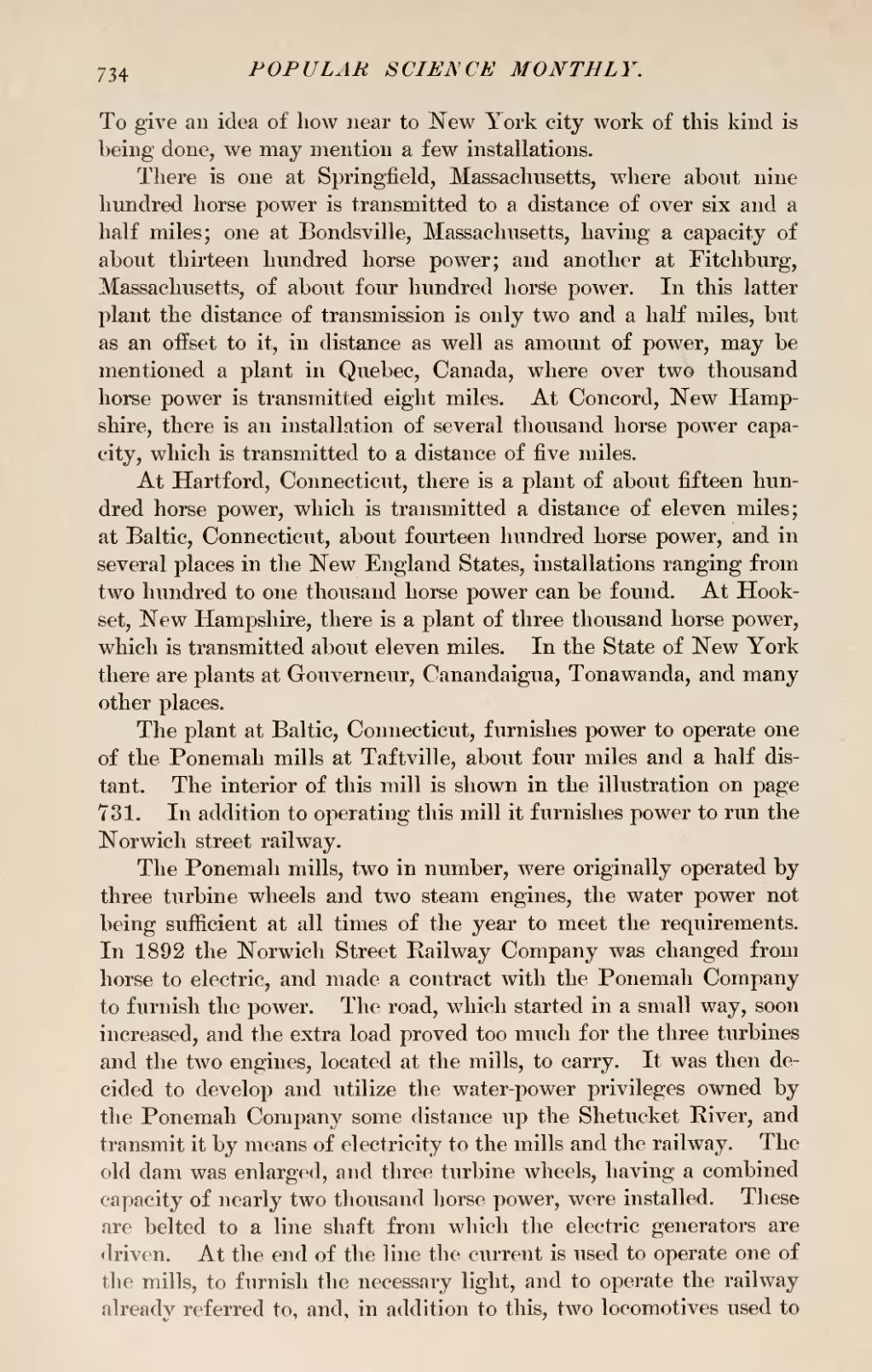To give an idea of how near to New York city work of this kind is being done, we may mention a few installations.
There is one at Springfield, Massachusetts, where about nine hundred horse power is transmitted to a distance of over six and a half miles; one at Bondsville, Massachusetts, having a capacity of about thirteen hundred horse power; and another at Fitchburg, Massachusetts, of about four hundred horse power. In this latter plant the distance of transmission is only two and a half miles, but as an offset to it, in distance as well as amount of power, may be mentioned a plant in Quebec, Canada, where over two thousand horse power is transmitted eight miles. At Concord, New Hampshire, there is an installation of several thousand horse power capacity, which is transmitted to a distance of five miles.
At Hartford, Connecticut, there is a plant of about fifteen hundred horse power, which is transmitted a distance of eleven miles; at Baltic, Connecticut, about fourteen hundred horse power, and in several places in the New England States, installations ranging from two hundred to one thousand horse power can be found. At Hookset, New Hampshire, there is a plant of three thousand horse power, which is transmitted about eleven miles. In the State of New York there are plants at Gouverneur, Canandaigua, Tonawanda, and many other places.
The plant at Baltic, Connecticut, furnishes power to operate one of the Ponemah mills at Taftville, about four miles and a half distant. The interior of this mill is shown in the illustration on page 731. In addition to operating this mill it furnishes power to run the Norwich street railway.
The Ponemah mills, two in number, were originally operated by three turbine wheels and two steam engines, the water power not being sufficient at all times of the year to meet the requirements. In 1892 the Norwich Street Railway Company was changed from horse to electric, and made a contract with the Ponemah Company to furnish the power. The road, which started in a small way, soon increased, and the extra load proved too much for the three turbines and the two engines, located at the mills, to carry. It was then decided to develop and utilize the water-power privileges owned by the Ponemah Company some distance up the Shetucket River, and transmit it by means of electricity to the mills and the railway. The old dam was enlarged, and three turbine wheels, having a combined capacity of nearly two thousand horse power, were installed. These are belted to a line shaft from which the electric generators are driven. At the end of the line the current is used to operate one of the mills, to furnish the necessary light, and to operate the railway already referred to, and, in addition to this, two locomotives used to
